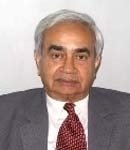Understanding India’s General Elections, 2004
04 Jun, 2004 · 1403
Report of the IPCS Roundtable held on 31 May 2004 (Speaker: PR Chari , Research Professor, IPCS)
|
Speaker: |
P R Chari Research Professor, IPCS |
Chari was of the view that given the fact that the government has changed seven times in the last nine elections, the results of the 2004 Parliamentary elections should not have come as a big surprise. The surprise element has been exaggerated since the media and poll predictions made before the elections had proved wrong.
The more relevant and important question that needs to be asked is why these predictions went wrong?
The exit and opinion polls failed to properly analyze the electorate’s priorities. In predicting the BJP’s victory, the poll analysts fell victims to the manipulation of operators in the political parties. The journalists and analysts might also have been in league with speculators in the stock exchange. Though, initially, everyone was taken in by the “India Shining” campaign, overkill made it a big national joke, which cost the BJP and its allies dearly.
The results of the 2004 Parliamentary elections demonstrated an overall negative character of votes against the NDA, but these negative votes do not necessarily translate into a positive vote for the Congress and its allies. There is not much difference in the Congress and BJP share of the seats.
Both national and state-centric reasons caused the rejection of the NDA alliance by the electorate. But the national result was an aggregation of unique state-centric results. For example, the BJP’s sweep in Rajasthan, Madhya Pradesh and Chattisgarh can be attributed to the fact that the Parliamentary elections were held soon after the Assembly elections and there was not much difference in the people’s voting behaviour. The defeat of the NDA/UPA allies in Punjab, Andhra, Karnataka and Tamil Nadu can be attributed to the anti-incumbency factor, as the losers were the ruling parties in these states. The anti-incumbency factor was not important, however, in Bihar and Uttar Pradesh where caste configurations were the more important considerations.
The results of this election could also reflect a rich-poor divide, particularly in states like Andhra Pradesh and Karnataka, but not an urban-rural divide as has been often stated.
There are however, several anomalies. The Gujarat riots and the Modi factor affected the NDA’s fortunes in Gujarat, but not in Rajasthan, Chattisgarh and Madhya Pradesh. In West Bengal, the same leftist parties came back to power, although they have been ruling there for over a quarter century. Is there no anti-incumbency factor operating there?
The criminalization of politics became more pronounced in the recent elections. The reasons for criminals getting elected as members of parliament can range from fear among the voters, caste and communal factors being dominant and even lack of credible alternative candidates.
In future elections, a serious re-consideration needs to be done of the opinion and exit poll surveys, which can be manipulated by the political parties or stock exchange speculators. Their results could, perhaps, be published only after all the polling has been completed and only the counting remains. There is a need to provide good governance at the grassroots level if political parties want to win in future elections. The reach of the electronic media to rural areas has brought about greater awareness regarding the ruling government and its positive and negative qualities; therefore, the electorate is more difficult to sway through the campaigning tactics of the political parties.
Discussion
· The exit and opinion polls in India have not been successful in predicting the election verdict and this has occurred primarily because it is difficult for the surveyors to discover the real sentiments of the Indian voters. The Indian voters have in fact outwitted the exit and opinion pollsters.
· The methodology followed during these polls needs re-examination as they have not succeeded in predicting the results correctly in the last three decades.
· The practical difficulties regarding the lack of communication in rural and conflict prone areas make it difficult for the pollsters to make accurate predictions. Moreover, in a country like India, where there are numerable parties unlike Britain or America which have a two party system, it becomes increasingly difficult to rely on such polls.
· One needs to also question the credibility and reliability of the media while analyzing opinion polls. The media seems to be making slanted assessments and is often manipulated by the political parties.
· The formation of alliances played an important role in the 2004 elections, both for the national and regional parties. The BJP’s formed alliances with the TDP and the AIADMK which lost the party seats in Andhra Pradesh and Tamil Nadu. At the same time, the Gujarat violence and the BJP’s involvement in it resulted in some of its regional allies suffering because of their alliance with the BJP.
· The 2004 elections also witnessed a marked accentuation in the criminalization of politics. Some winners have been appointed as Union Ministers, despite their having criminal records.


